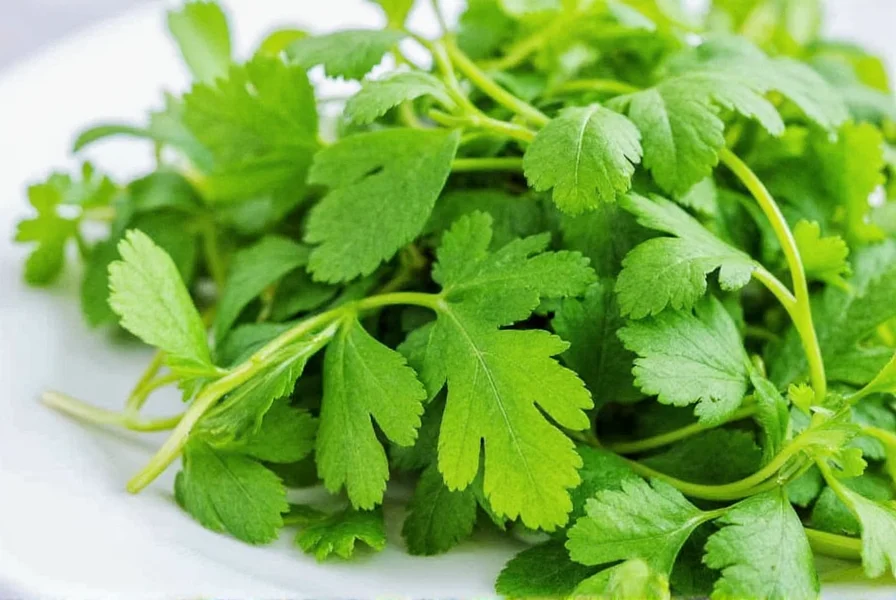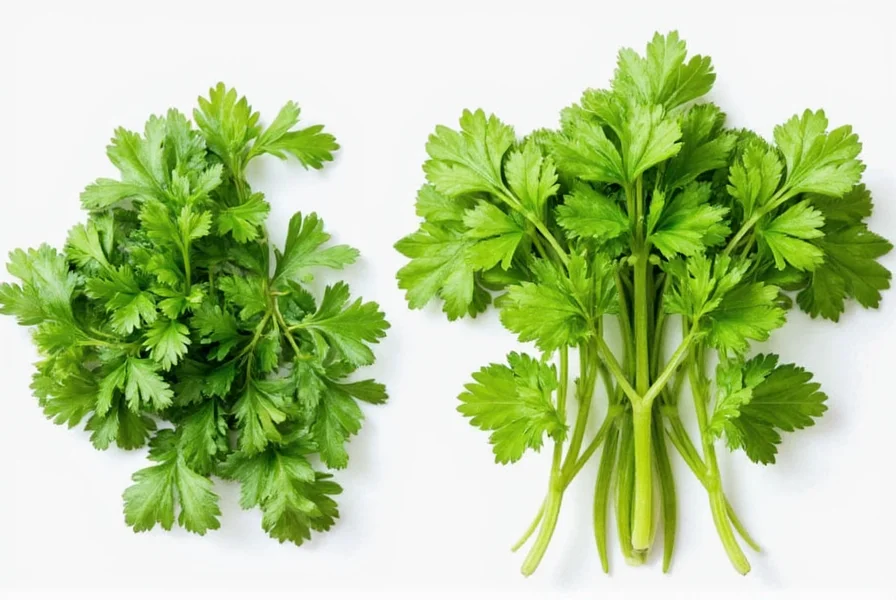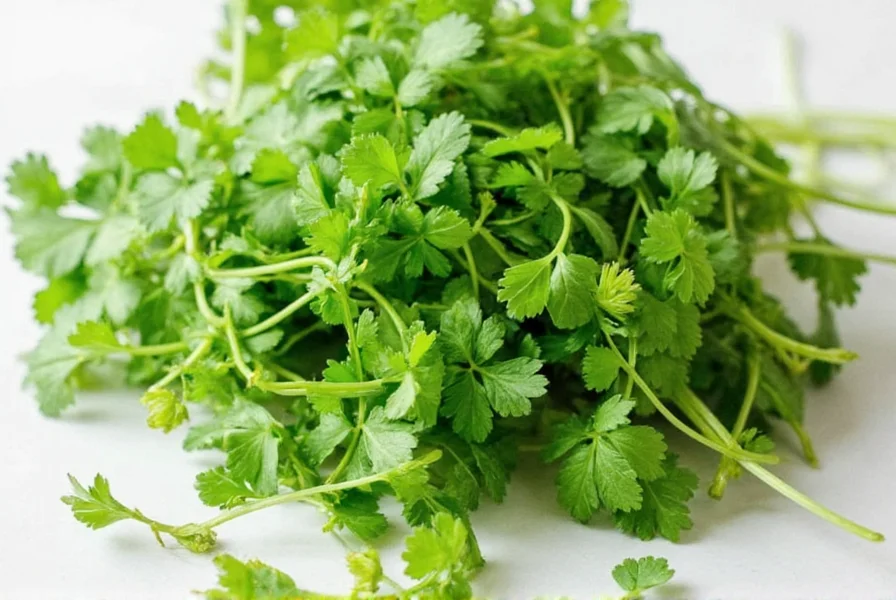Understanding the relationship between cilantro and coriander is essential for home cooks and culinary enthusiasts navigating international recipes. This common point of confusion stems from linguistic traditions rather than botanical differences. Let's explore the complete picture of this versatile herb and spice.
Botanical Identity: One Plant, Multiple Names
Coriandrum sativum, an annual herb in the Apiaceae family, produces both the fresh herb known as cilantro and the dried seeds called coriander. This single plant offers two distinct culinary ingredients with different flavor profiles, appearances, and uses.
The plant grows to about 1-2 feet tall with slender stems, delicate lacy leaves, and small white or pink flowers that eventually produce the round coriander seeds. What you call these components depends largely on where you live and which part of the plant you're using.
Regional Terminology Explained
The naming discrepancy between cilantro and coriander represents one of the most persistent confusions in global cooking. This table clarifies the terminology across different regions:
| Region | Fresh Leaves | Dried Seeds |
|---|---|---|
| United States & Canada | Cilantro | Coriander |
| United Kingdom & Commonwealth | Coriander (or fresh coriander) | Coriander seeds |
| Mexico & Latin America | Cilantro | Cilantro seeds or comino verde |
| India | Dhaniya (leaves) | Dhaniya (seeds) |
Physical and Flavor Differences
While originating from the same plant, the fresh leaves and dried seeds offer dramatically different culinary experiences:
- Cilantro (fresh leaves): Bright green, lacy leaves with a distinctive citrusy, slightly peppery flavor that some describe as soapy (due to a genetic predisposition). The flavor is fresh and vibrant but diminishes quickly when cooked.
- Coriander seeds: Small, round, beige seeds with a warm, nutty, slightly citrusy flavor when whole. When ground, they develop a more complex, spicy-sweet aroma reminiscent of lemon and sage.

Culinary Applications: When to Use Which
Understanding the difference between cilantro and coriander is crucial for recipe success. The fresh leaves and dried seeds serve completely different purposes in cooking:
Professional chefs and experienced home cooks know that substituting one for the other will significantly alter a dish's flavor profile. Cilantro works best added at the end of cooking or as a fresh garnish, while coriander seeds benefit from toasting and grinding to release their essential oils before incorporation into dishes.
For those wondering can I substitute cilantro for coriander seeds in a recipe, the answer is generally no—they're too different in flavor. However, if you're out of fresh cilantro, you might use a small amount of ground coriander combined with parsley and a squeeze of lime for certain applications, though the results won't be identical.
Historical Context of the Naming Confusion
The term "coriander" derives from the Greek word "koris," meaning bedbug, likely referencing the plant's pungent smell when crushed. Spanish explorers brought the plant to the Americas, where it became known as "cilantro," a shortened form of the Spanish word "coriandrum."
This linguistic evolution explains why is cilantro the same as coriander leaves remains such a common question among cooks. The same plant received different names in different regions, creating ongoing confusion for recipe developers and home cooks alike.
Practical Tips for Cooks
When navigating recipes that use these terms, consider these practical guidelines:
- Check the recipe's country of origin to anticipate terminology
- Recipes calling for "fresh coriander" almost always mean what Americans call cilantro
- Recipes specifying "coriander seeds" or "ground coriander" refer to the dried seeds
- When substituting, remember that dried herbs are more concentrated than fresh

Common Misconceptions Clarified
Several myths persist about cilantro and coriander that deserve clarification:
- Misconception: Cilantro and coriander are different plants
Reality: They come from the exact same botanical source - Misconception: Coriander seeds come from a different plant than cilantro
Reality: The seeds develop on the same plant that produces the fresh leaves - Misconception: Cilantro is just young coriander
Reality: The plant produces both simultaneously—the leaves don't transform into seeds
Storage and Preservation Techniques
Proper storage differs significantly for the fresh leaves versus the dried seeds:
- For fresh cilantro: Trim stems, place in water like flowers, cover loosely with plastic bag, and refrigerate. Alternatively, chop and freeze in olive oil.
- For coriander seeds: Store whole seeds in an airtight container away from light and heat. They'll maintain potency for 1-2 years. Ground coriander loses flavor within 6 months.
Understanding these storage differences represents another aspect of the difference between cilantro and coriander seeds that impacts cooking results.
Frequently Asked Questions
Can I grow coriander and get both cilantro and coriander seeds from the same plant?
Yes, growing Coriandrum sativum gives you access to both components. Harvest the fresh leaves (cilantro) throughout the growing season, then allow some plants to flower and produce seeds (coriander) at the end of the season. The plant will naturally progress from leaf production to seed production as temperatures warm.
Why do some people think cilantro tastes like soap?
Approximately 21% of the population carries a genetic variation that makes cilantro taste soapy. This genetic predisposition affects how certain aldehydes in cilantro are perceived. The same compounds that provide cilantro's distinctive flavor are also found in soap, leading to this unusual taste perception for some individuals.
Can I substitute dried cilantro for fresh in recipes?
Dried cilantro (often labeled as dried coriander leaves) exists but has significantly less flavor than fresh. Use one teaspoon of dried cilantro for every tablespoon of fresh required. However, for best results in dishes where cilantro is a featured ingredient, fresh is always preferable as drying diminishes its distinctive citrus notes.
Are cilantro stems usable in cooking?
Yes, cilantro stems contain concentrated flavor and are completely edible. Finely chop the tender upper stems along with the leaves for maximum flavor impact in salsas, chutneys, and curries. The thicker lower stems can be used to infuse flavor into soups and stocks before being discarded.
Does coriander have health benefits beyond culinary uses?
Both cilantro and coriander seeds offer potential health benefits. Coriander seeds contain antioxidants and may help regulate blood sugar, while cilantro has been studied for potential detoxifying properties. The leaves provide vitamin K, vitamin A, and vitamin C, while the seeds are a good source of dietary fiber, iron, and manganese.











 浙公网安备
33010002000092号
浙公网安备
33010002000092号 浙B2-20120091-4
浙B2-20120091-4